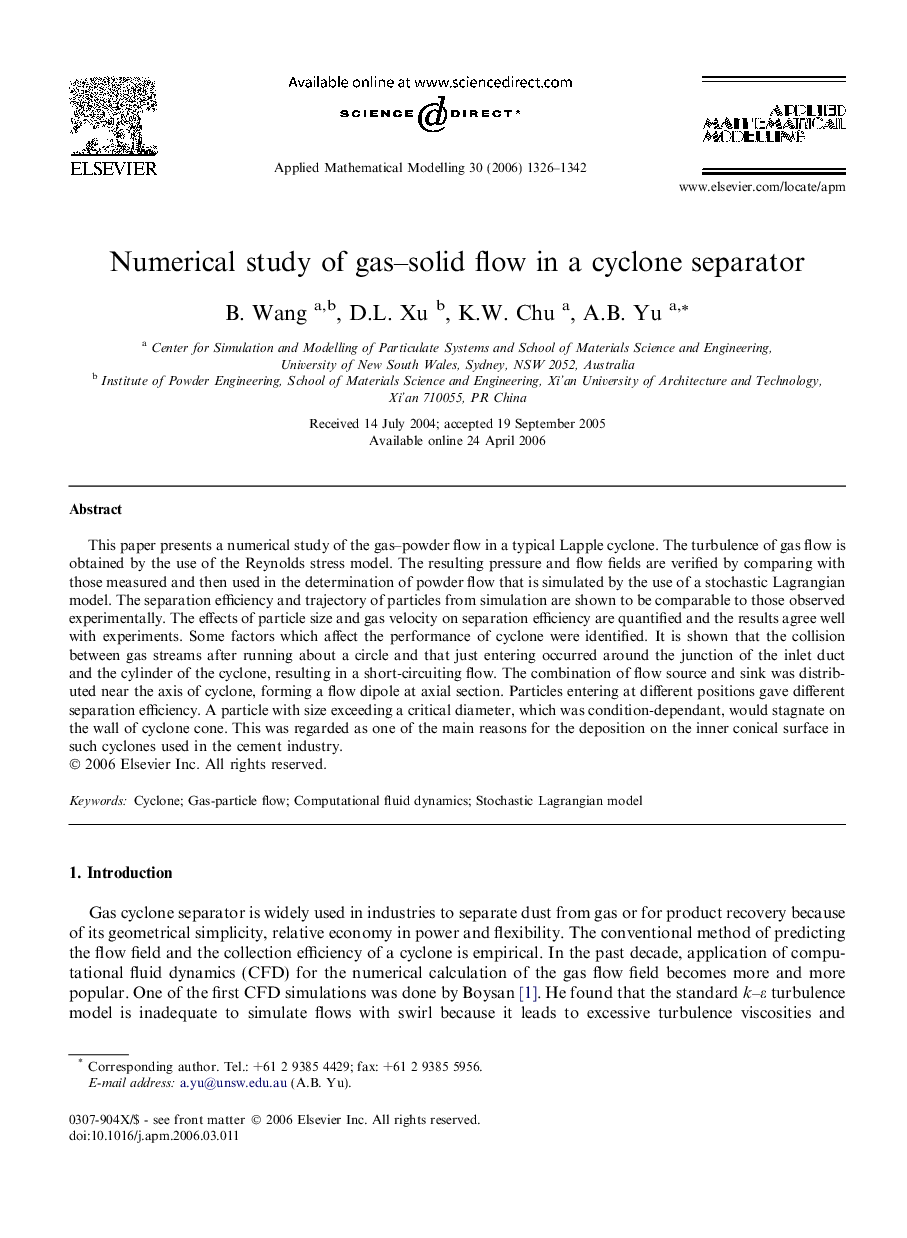| کد مقاله | کد نشریه | سال انتشار | مقاله انگلیسی | نسخه تمام متن |
|---|---|---|---|---|
| 1707317 | 1012543 | 2006 | 17 صفحه PDF | دانلود رایگان |

This paper presents a numerical study of the gas–powder flow in a typical Lapple cyclone. The turbulence of gas flow is obtained by the use of the Reynolds stress model. The resulting pressure and flow fields are verified by comparing with those measured and then used in the determination of powder flow that is simulated by the use of a stochastic Lagrangian model. The separation efficiency and trajectory of particles from simulation are shown to be comparable to those observed experimentally. The effects of particle size and gas velocity on separation efficiency are quantified and the results agree well with experiments. Some factors which affect the performance of cyclone were identified. It is shown that the collision between gas streams after running about a circle and that just entering occurred around the junction of the inlet duct and the cylinder of the cyclone, resulting in a short-circuiting flow. The combination of flow source and sink was distributed near the axis of cyclone, forming a flow dipole at axial section. Particles entering at different positions gave different separation efficiency. A particle with size exceeding a critical diameter, which was condition-dependant, would stagnate on the wall of cyclone cone. This was regarded as one of the main reasons for the deposition on the inner conical surface in such cyclones used in the cement industry.
Journal: Applied Mathematical Modelling - Volume 30, Issue 11, November 2006, Pages 1326–1342